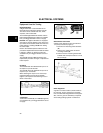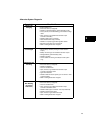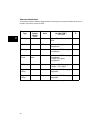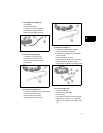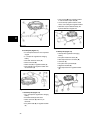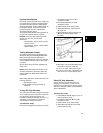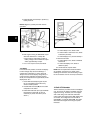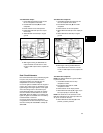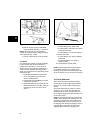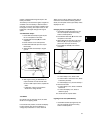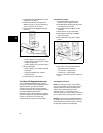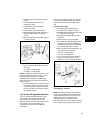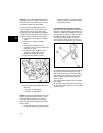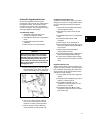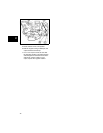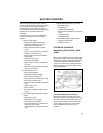
36
2
2
Figure 21
6. With the engine running at 3600 RPM,
output should be between 2 - 4 Amps DC.
NOTE: The output will vary with the battery
voltage. At maximum battery voltage the output
will be approximately 2 Amps.
7. If NO or LOW output is found, test diode.
Test Diode
In the Diode Test position, the meter will display
forward voltage drop across the diode(s). If
voltage drop is less than 0.7 volts, meter will
“Beep” once as well as display voltage drop. A
continuous tone indicates continuity (shorted
diode). An incomplete circuit (open diode) will be
displayed as “OL.”
1. Insert RED test lead (A, Figure 22) into
the V Ω receptacle and set the rotary
switch to Diode position.
2. Insert BLACK test lead (B) into the COM
receptacle in the meter.
3. Attach RED test lead clip to point (C) and
Black test lead clip to point (D). (It may be
necessary to pierce wire with a pin as
shown.)
Figure 22
• If meter “Beeps” once, diode is OK.
• If meter makes a continuous tone, diode
is defective (shorted).
• If meter displays “OL,” proceed to Step 4.
4. Reverse test leads.
• If meter “Beeps” once, diode is installed
backwards.
• If meter still displays “OL,” diode is
defective (open).
5. If diode tests OK, replace stator.
NOTE: Service replacement diode harnesses
are available. Use Rosin Core solder when
installing new harness. Use shrink tubing or tape
for all connections. Do not use crimp connectors.
Tri-Circuit Alternator
The tri-circuit alternator provides alternating
current (AC) through a single output lead and
connector to a wiring harness containing two
diodes.
One diode rectifies the AC current to 5 Amps
negative (-) DC for lights. The second diode
rectifies the AC current to 5 Amps positive (+)
DC for battery charging and external loads, such
as an electric clutch.
NOTE: Some original equipment manufacturers
(OEMs) supply diodes as an integral part of the
equipment wiring harness. Some OEMs use a 1
Ohm-20 Watt resistor placed in series with (+)
DC charging lead, limiting the charging current to
approximately 3 Amps when the clutch is not
engaged. When the clutch is engaged, the



